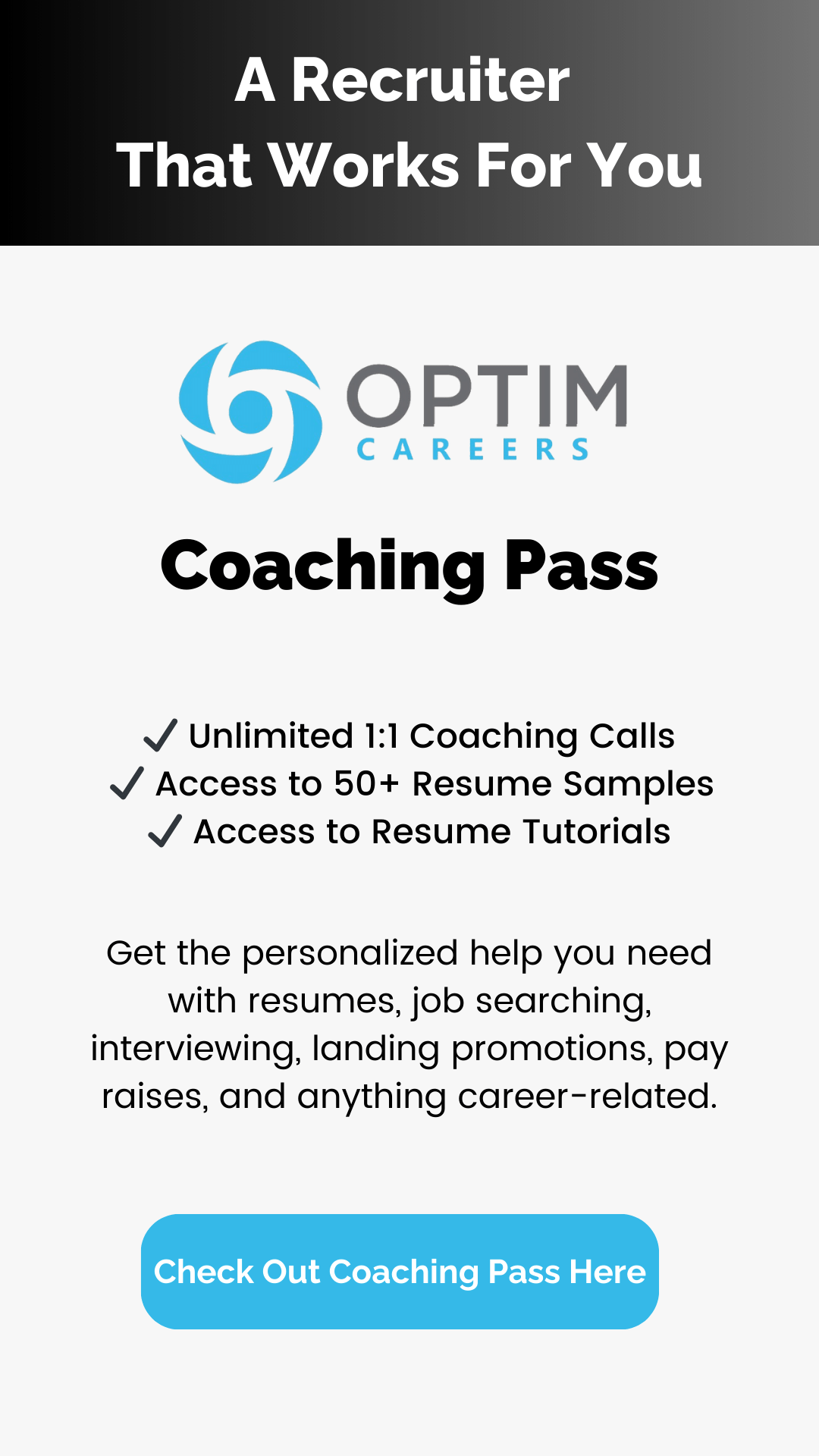Do You Put Periods After Bullet Points On A Resume
This is one of the most contentious debates among recruiters, hiring managers, and resume writers. Do you put a period after a bullet point on a resume? Or if you’re one of my UK friends, a “full-stop.”
Ask a group of people and they’ll all give you different answers. Ask a group of experts (the people who actually read resumes and decide who to interview) and they’ll all give you different answers.
So I recently decided to put this to the test and surveyed a group of people on LinkedIn and a group of my recruiting colleagues to see what they thought. Of course, the results were all over the place, but there was a plurality in favor of not putting periods after your job experience bullet points.
Now when I asked more questions to the hiring managers and recruiters I spoke with, I did receive some insightful feedback about when they would expect to see periods and when they wouldn’t care. Let’s get into that!
Key Takeaways:
Most people do not use periods in work experience bullet points
Almost everyone agrees not to use periods after bullet points in skills, technology, or education sections of your resume
The important thing is to be consistent with whatever you decide to do
When to Use Periods in a Resume
Almost everyone I spoke with agreed that if you are writing anything in paragraph form that uses complete sentences, you need to use a period. That means the sentences in the summary at the top of your resume should be written using periods at the end. If you follow my style of resume writing, your job summaries should also be complete sentences with periods at the end.
I had complete, unanimous agreement about this.
Using Periods With an Understood “I”
If you’ve read a handful of resumes, you’ve probably noticed something. Resumes are a special kind of writing to put it lightly, but one defining trait is that they leave out personal pronouns. In other words, sentences are written with an understood “I”. Resumes also tend to contain mostly phrases and fragments and not complete sentences.
So it’s no wonder so many people ask, do I use a period?
When I spoke with my colleagues about this, the plurality was that it didn’t matter if the sentence had an understood “I” or not. Even if the pronoun was understood, if it was a complete sentence in paragraph form, it needed to have a period at the end.
However, when asking about bullet points that were complete sentences and omitted pronouns, there was a small minority that suggested adding the period at the end. But the majority said they would not.
Example of the Understood I in a Resume Work Experience Bullet Point
Collaborated with project managers to reduce timelines by an average of 2 weeks through the systemization of project briefs
Note that the personal pronoun is absent. That’s because it’s unnecessary in a resume. After all, everyone knows that you’re referring to yourself. In most other writing forms (not resumes), the sentence would read, “I collaborated with…”.
Should Resume Bullet Points End With a Period
Before I answer the question, I want to clear up some grammar confusion. Just because your work experience bullet points don’t include a personal pronoun doesn’t mean they aren’t complete sentences. This leads us to the question, should they end with a period?
The technical grammar rule is this: Complete sentences (those with a subject and verb) should have a period at the end. Fragments or phrases should not.
Periods divide sentences and conclude complete thoughts. But when it comes to resumes, most people don’t follow this rule and that’s acceptable. That’s probably because each bullet point is one complete thought and so by concluding the bullet point itself, the idea has closure.
For me personally and the majority of writers, hiring managers, and recruiters I’ve spoken with, we don’t use periods at the end of our work experience bullet points.
Be Consistent With Your Resume Punctuation
One thing that did matter to almost everyone I spoke with was consistency. No matter if the individual thought you should include periods at the end of your work experience bullet points or not, they all said whatever you do, do it consistently.
If you use periods, use them after every bullet point. If you don’t use them, then don’t use them after any bullet points. Consistency was near and dear to everyone’s heart.
The good news is, whether you decide to use periods at the end of your work experience bullet points or not, I’ve never seen it impact a candidate’s interview chances - and I’ve worked with hundreds of recruiters through my consultancy business which advises recruitment firms.
There may be some exceptions, such as if you’re applying for a technical copywriting role, but for the most part hiring managers are busy solving real problems - not debating over periods in a resume. So breathe.
Should You Use Periods for Skills, Technology, or Educational Bullet Points
So we’ve covered the debate about periods in our work experience bullet points, but what about in other sections? This question was much easier to answer because there is a uniform agreement that you should not use periods for these sections. None of these sections have complete sentences; and therefore, do not require periods at the end of them.
Other Forms of Resume Punctuation
Because we’re on the topic, I thought it may be worth taking a minute to cover some other punctuation you may use in your resume.
Semicolons
Semicolons connect two complete sentences. You can use these for bullet points that have two complete thoughts that are related. For example:
Analyzed data from over 25 databases; identified over 300 errors and proposed corrections within 30 days.
Note that if you use a semicolon this way, you do not capitalize the letter after the semicolon unless it is a name or proper noun.
You can also use semicolons to replace commas in a list of items. I do this when I have complex sentences with several commas. It helps the reader digest the material better.
Hyphens
Hyphens join two or more words together. For example:
full-time
cross-functional
An en dash is similar to a hyphen in look, but it has a slightly longer line. It is approximately the length of the letter N. En dashes are used to mark ranges and can replace the word “to” in phrases and dates. This is the grammatically correct way to denote time. For example:
October 2017 – January 2022
You can type an en dash on a Mac by using Option + Dash (-).
PCs are not as easy. You can either type a spaced hyphen in between words or numbers and it will autocorrect it to an en dash. Just remember that you have to go back in and delete the spaces. If you have a number keypad, you can use Ctrl + Minus Sign (-). You can also insert the symbol under the insert tab.
Commas
You’re probably going to use quite a few commas in your resume. Commas separate items in a sentence for clarity which is very commonly used in work experience bullet points. They also are used to form lists and with the conjunctions and/or.
Do You Put Periods After Bullet Points on a Resume Recommended Reading
How to Determine How Many Bullet Points Per Job on a Resume Is Right For You
The Best Resume Bullet Point Generators
Cole Sperry has been a recruiter and resume writer since 2015, working with tens of thousands of job seekers, and hundreds of employers. Today Cole runs a boutique advisory firm consulting with dozens of recruiting firms and is the Managing Editor at OptimCareers.com.












Every career advice article tells you the same thing: January is the busiest month for hiring. There's just one problem. It's not entirely true.